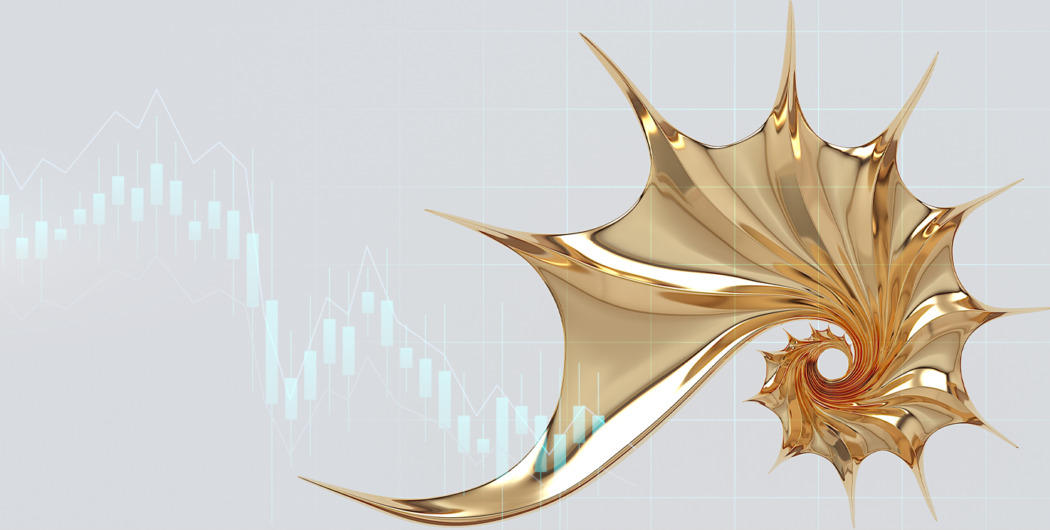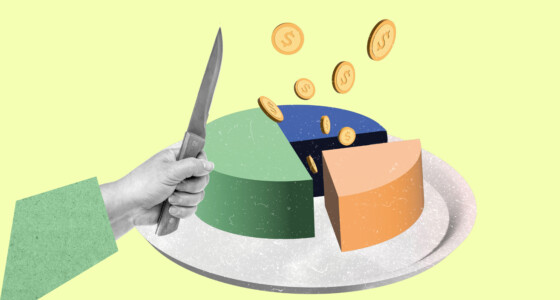

Fibonacci levels are an important technical tool that helps traders determine support and resistance targets. Its two main advantages are its accuracy and its ability to be applied to any market. Although it’s not easy to draw the levels, this indicator can be used even by newbies. Read on to learn how to implement the Fibonacci indicator on a price chart.
History of Fibonacci
The technical tool got its name from the Italian mathematician Leonardo Pisano, also known as Leonardo Fibonacci or Leonardo of Pisa. It’s hard to define his real name because he was born in 1170. He introduced Fibonacci numbers to the Western world, but the calculation method was developed by Virahanka, the Indian mathematician, long before that.
Fibonacci trading system
The so-called Fibonacci number is a sequence, where each next number (after 0 and 1) is the sum of two preceding numbers. This is 0, 1, 1, 2, 3, 5, 8, etc.
You may be shocked, but Fibonacci levels are not the Fibo sequence. They are just derived from the division of numbers in the Fibo sequence. For example, 61.8% is the “golden” ratio of Fibonacci retracements. To get it, you need to divide one number in the Fibo sequence into the following one.
For instance, divide 89 into 144, and you will get 0.6180. To get the 38.2% ratio, you need to divide one number into another but two places to the right. For example, divide 89 into 233, and you will get 0.3819. To get the 23.6% ratio, you need to divide a number in the Fibonacci sequence into another number three places to the right. This is, when 89 is divided into 377, you get 0.2360.
If you recheck another number but not 89, you will be confused because it’s not always an exact figure of the Fibo levels. However, it will always be close to them.
Fibonacci retracements are 0%, 23.6%, 38.2%, 50%, 61.8%, 78.6%, and 100%. The 50% level is not derived from the Fibo sequence. However, over the years, traders have been using it as a psychological level that is important for further price direction.
The art of Fibonacci trading
Fibo retracements and Fibo extensions are the key indicators based on the Fibo sequence. However, you can find some other variations.
Fibonacci retracements
Fibo retracements are used more often. To apply the indicator to the price chart, choose “Fibonacci retracements” in the list of indicators on a trading platform. It’s a standard indicator. Therefore, you don’t need to install it yourself.
Determine the highest and the lowest point of a trend. It’s vital to understand that you need a trend, not a daily price movement. Connect the maximum and minimum from top to bottom if you trade in a downtrend. If you apply the indicator to an uptrend, connect high and low from bottom to top.
Fibonacci extensions
To draw Fibonacci extensions, you need to find a swing and connect three points. If you trade in an uptrend, you should connect the top, bottom, and top. You should connect the bottom, top, and bottom if it’s a downtrend. Fibonacci extensions include standard Fibonacci retracements levels as well as 161.8%, 261.8%, 361.8%, and 423.6%.

Fibonacci trading strategy
Now you know how to draw the levels, let’s learn how to trade based on them.
Fibonacci retracements
Fibonacci retracements are used to reflect support and resistance levels. If you use the indicator in a strong trend, these levels will reflect where the price is supposed to rebound and continue trading in the overall trend direction.
As you can see on the chart above, the GBP/USD pair started correcting. But the 0.236 Fibo level became a strong resistance. So the price rebounded from it twice.
Fibonacci extensions
Fibonacci extensions are used to determine the levels where you should take profit.
On the chart above, the GBP/USD pair traded in the uptrend. As it was unclear whether the uptrend would continue, you could fix your returns at the levels colored orange. You would use only standard Fibo retracement levels as profit targets because the price didn’t reach the 1.618 level. Such a situation can occur when a swing is near the end of the trend.
Fibonacci trading: pitfalls
Looking at the chart, especially on the chart with extensions, you may ask why the price always went beyond the Fibonacci levels. This is because the market can’t move according to strict rules. Pictures are drawn to show you a perfect situation. However, it seldom occurs on a price chart. Even if you take profit a little bit earlier, it won’t affect your final return much. Also, you should know that the indicator can’t predict whether the trend will continue.
How to calculate Fibonacci retracement lines
You can find out Fibonacci retracement levels if you create a grid by taking low and high points on a chart, then horizontally marking the important Fibonacci ratios. With the help of horizontal lines, you can discover potential price reversal points.
You can calculate Fibonacci retracement lines using the following formulas for the uptrend or bullish market:
– Uptrend Retracement = High – ((High – Low) * Percentage)
– Uptrend Extention = High + ((High – Low) * Percentage)
As for the downtrend or bearish market, here are the suitable formulas:
– Downtrend Retracement = Low + ((High – Low) * Percentage)
– Downtrend Extention = Low – ((High – Low) * Percentage)
You can use special calculators to calculate Fibonacci retracement lines as well.
Fibonacci levels used in the financial markets
The Fibonacci retracement numbers are not numbers that are present in Fibonacci’s sequence in a trading context. They are taken from mathematical relationships from a sequence’s numbers.
The 61.8% “Golden” Fibonacci ratio basis is derived from dividing a Fibonacci series number by the following number, for instance, 89/144 = 0.6180.
Then, in 89/233 = 0.3819, we divide a Fibonacci series number by the number that is two places to the right, obtaining the 38.2% ratio.
The key Fibonacci ratios are 23.6%, 38.2%, and 61.8%. Usually, the retracement level of 50% is included in the Fibonacci levels grid as well. Keep in mind that you can use special charting software to draw the grid.
Final thoughts
Fibonacci levels are an effective tool that can predict where the price may rebound. However, it’s vital to remember that there is no perfect indicator. Therefore, each signal of the Fibo levels should be confirmed by other indicators or chart patterns signaling a price reversal.









